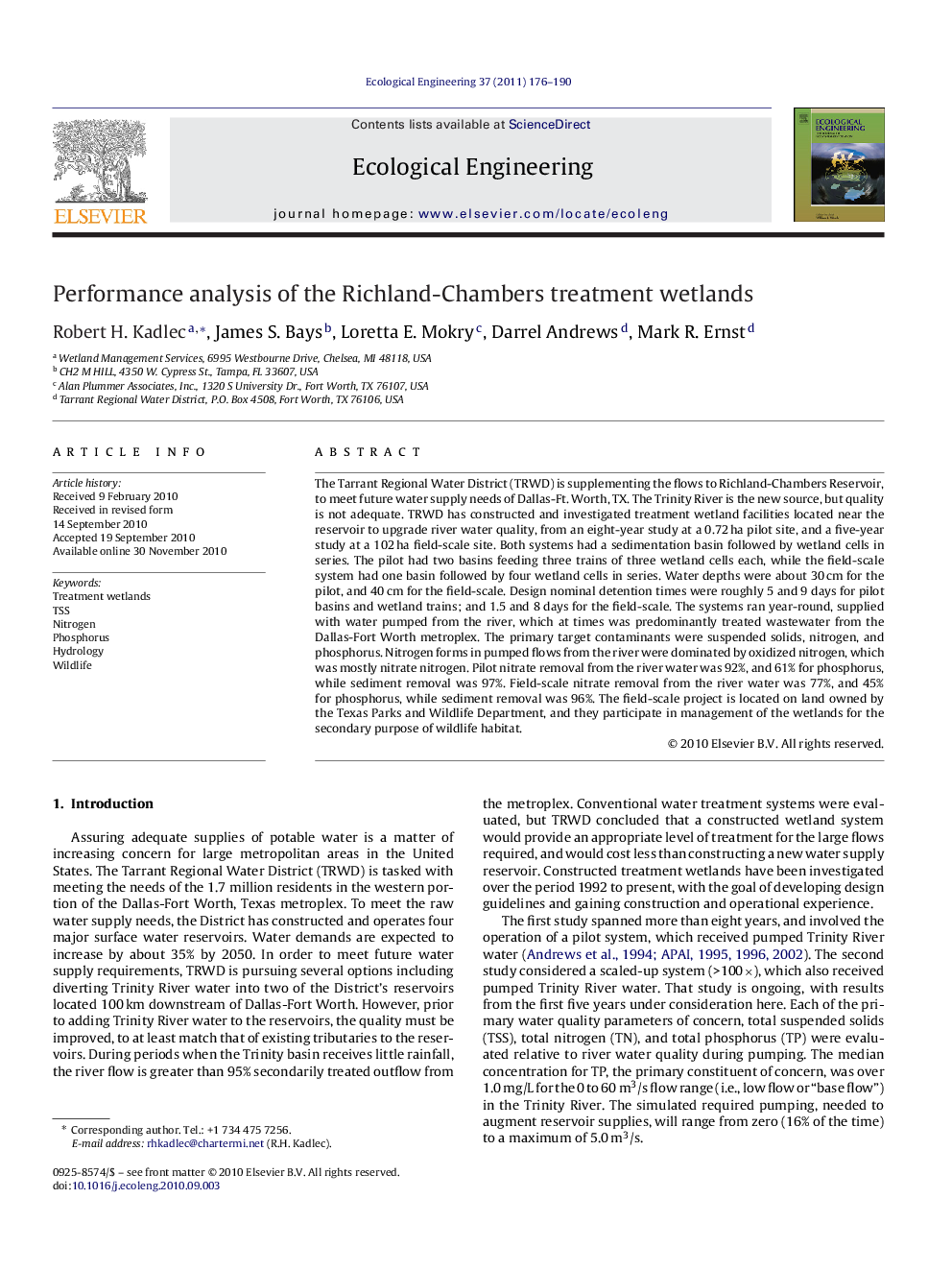| Article ID | Journal | Published Year | Pages | File Type |
|---|---|---|---|---|
| 6302829 | Ecological Engineering | 2011 | 15 Pages |
Abstract
The Tarrant Regional Water District (TRWD) is supplementing the flows to Richland-Chambers Reservoir, to meet future water supply needs of Dallas-Ft. Worth, TX. The Trinity River is the new source, but quality is not adequate. TRWD has constructed and investigated treatment wetland facilities located near the reservoir to upgrade river water quality, from an eight-year study at a 0.72Â ha pilot site, and a five-year study at a 102Â ha field-scale site. Both systems had a sedimentation basin followed by wetland cells in series. The pilot had two basins feeding three trains of three wetland cells each, while the field-scale system had one basin followed by four wetland cells in series. Water depths were about 30Â cm for the pilot, and 40Â cm for the field-scale. Design nominal detention times were roughly 5 and 9 days for pilot basins and wetland trains; and 1.5 and 8 days for the field-scale. The systems ran year-round, supplied with water pumped from the river, which at times was predominantly treated wastewater from the Dallas-Fort Worth metroplex. The primary target contaminants were suspended solids, nitrogen, and phosphorus. Nitrogen forms in pumped flows from the river were dominated by oxidized nitrogen, which was mostly nitrate nitrogen. Pilot nitrate removal from the river water was 92%, and 61% for phosphorus, while sediment removal was 97%. Field-scale nitrate removal from the river water was 77%, and 45% for phosphorus, while sediment removal was 96%. The field-scale project is located on land owned by the Texas Parks and Wildlife Department, and they participate in management of the wetlands for the secondary purpose of wildlife habitat.
Related Topics
Life Sciences
Agricultural and Biological Sciences
Ecology, Evolution, Behavior and Systematics
Authors
Robert H. Kadlec, James S. Bays, Loretta E. Mokry, Darrel Andrews, Mark R. Ernst,
